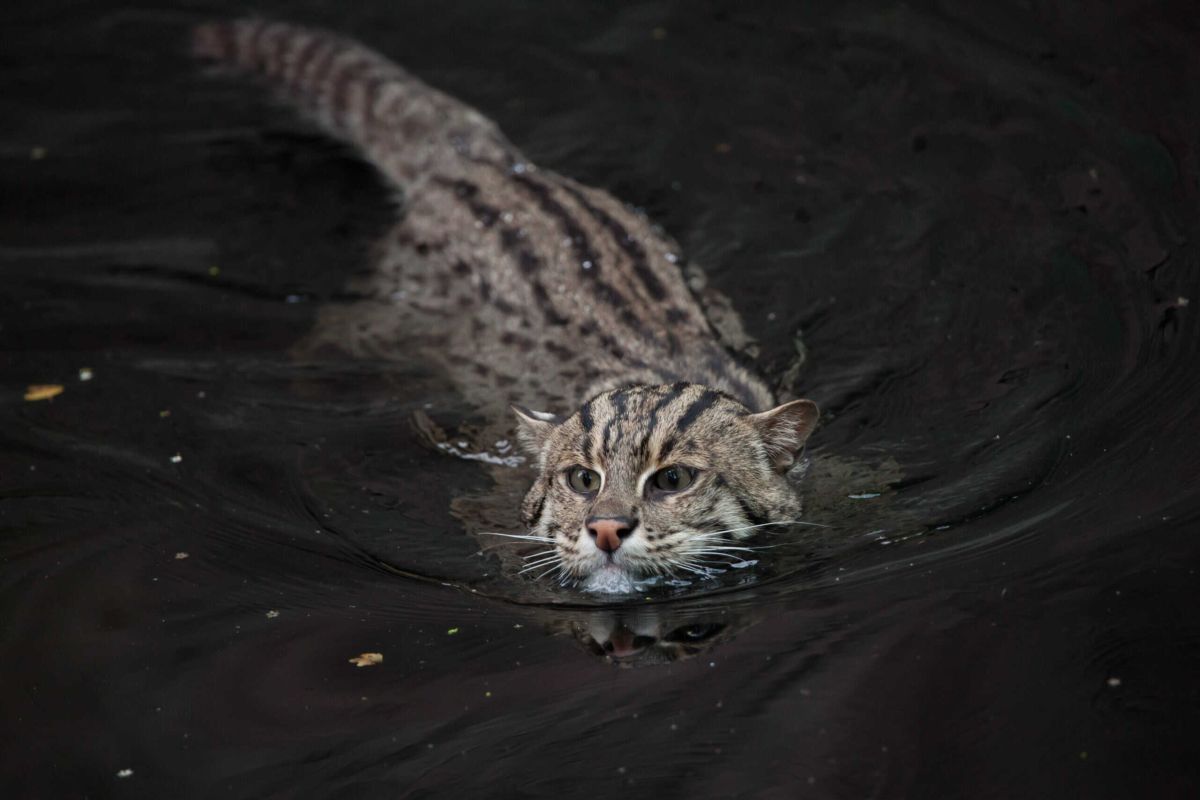Wild Cats That Can Swim

When it comes to the animal kingdom, felines are often associated with their incredible agility and stealth on land. However, many of these wild cats have adapted to thrive in environments that require swimming proficiency. From their playful splashes in water to their remarkable hunting techniques, swimming is an essential part of their behavior. Here is a closer look at the top 15 wild cats that can swim.
1. Tigers (Panthera tigris)
Tigers are arguably the most famous swimming cats. Unlike most big cats, tigers actively seek out water to cool off and often swim in rivers and lakes. They are known to swim long distances and are proficient hunters in aquatic environments, often preying on animals like fish and even crocodiles.
2. Leopards (Panthera pardus)
Leopards are adaptable felines found in diverse habitats, including regions near water bodies. They are strong swimmers and can traverse lakes and rivers, often hunting aquatic animals such as fish and amphibians. Their ability to climb trees also aids them in stalking prey near water.
3. Lions (Panthera leo)
While lions are chiefly known as land predators, they can swim when necessary. In the Okavango Delta, some lion populations are known to swim between islands while hunting and relocating. Young lions often play in water, helping develop their swimming skills.
4. Jaguar (Panthera onca)
Jaguars are highly skilled swimmers with a penchant for hunting in water. They are known to take down caimans and turtles, showcasing their powerful jaws and stealth underwater. Found in Central and South America, jaguars often hunt along riverbanks and wetland areas.
5. Bobcats (Lynx rufus)
Bobcats are versatile hunters that can adapt to various environments, including wetlands. They are known to swim when necessary, especially in pursuit of prey or to escape predators. Although they prefer drier habitats, their swimming ability is a valuable skill.
6. Canadian Lynx (Lynx canadensis)
The Canadian lynx is well-adapted to its snowy habitat, but it can also swim efficiently when needed. These solitary hunters often prefer to traverse rivers and lakes in search of prey or to explore new territories, demonstrating agility both on land and in water.
7. Fishing Cat (Prionailurus viverrinus)
As the name suggests, fishing cats are primarily aquatic cats. They are found in wetlands across South and Southeast Asia and have adapted to catching fish as their main food source. They can swim well and even hunt underwater, using their webbed feet to paddle through murky waters.
8. Flat-headed Cat (Prionailurus planiceps)
The flat-headed cat is another species highly specialized for an aquatic lifestyle. Found in freshwater habitats of Southeast Asia, these small cats hunt fish, frogs, and other aquatic prey. Their streamlined bodies make them adept swimmers, allowing them to navigate through dense vegetation.
9. Rusty-spotted Cat (Prionailurus rubiginosus)
This small cat species, found in India and Sri Lanka, has been observed swimming in a variety of environments. While they mostly inhabit dry forests and grasslands, they are agile swimmers that can cross streams and rivers in search of food.
10. Serval (Leptailurus serval)
Servals are known for their incredible jumping abilities, but they are also skilled swimmers. Found in sub-Saharan Africa, these medium-sized cats hunt birds and rodents near water sources. Their swimming ability comes in handy, especially when stalking prey.
11. Ocelot (Leopardus pardalis)
Ocelots are highly adaptable cats that can thrive in a variety of habitats ranging from deserts to wetlands. They are proficient swimmers, often seen hunting in shallow waters for fish, frogs, and small mammals. Their playful nature also leads them to enjoy splashing in water.
12. Geoffroy’s Cat (Leopardus geoffroyi)
Native to South America, Geoffroy’s cat is an agile swimmer found near rivers and marshes. They are known to hunt a wide variety of prey, and their swimming capabilities allow them to access fish and amphibians that would otherwise be out of reach.
13. Andean Mountain Cat (Leopardus jacobita)
Though primarily associated with mountainous terrains, the Andean mountain cat is known to swim when necessary. These elusive cats can adapt to changing environments, including pursuing prey across streams and lakes in their habitat.
14. Sand Cat (Felis margarita)
Surprisingly, sand cats can swim, despite their association with arid desert environments. While they rarely do so, they are capable of crossing small bodies of water. This adaptability adds an interesting dimension to their survival skills.
15. Pampas Cat (Leopardus colocola)
The Pampas cat, found across South America, is an agile swimmer capable of maneuvering through wetland areas. They hunt a variety of prey, including birds and small mammals, and their swimming ability allows them to access rich food sources around water bodies.
Conclusion
The ability to swim is a fascinating adaptation that enhances survival for many wild cat species. From the mighty tiger to the elusive fishing cat, these felines exhibit remarkable skills in navigating aquatic environments. Understanding their affinity for water enriches our appreciation for the diversity of their lifestyles and habitats. As we continue to explore the natural world, let’s celebrate these swimming cats and the unique role they play in their ecosystems.



